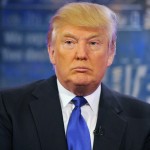This is an interesting article from Brahma Chellaney – an intelligent Indian analyst… he makes interesting point on how the US relationship with Indian and Pakistan is moving from Hyphenation to Parallelism.
The truth is that the Bush policy has gone beyond hyphenation to parallelism. The new approach involves following parallel tracks with India and Pakistan. In effect, this permits the US to push its interests better. It also allows the US to quietly bolster Pakistan without causing a crisis with India. Consider the following stark parallels in US actions:
* No sooner had the US initiated the Next Steps in Strategic Partnership (NSSP) with India in early 2004 than it caught New Delhi unawares by designating Pakistan a Major Non-Nato Ally (MNNA) under the 1961 Foreign Assistance Act. What India guilelessly saw as America’s courtship turned out to be parallel relationships. Fidelity is a concept alien to US geostrategy. The more Bush claims he is not pairing India and Pakistan, the more it is evident that he is gaily two-timing.
* Bush’s rearming of Pakistan also coincided with a push to sell weapons to the world’s largest buyer of arms, India. The decision to sell F-16s, P-3C Orions, C-130s, TOW missiles, Aerostat surveillance radars, 155 mm self-propelled howitzers and Phalanx systems to Pakistan was justified to maintain “military balance on the subcontinent”. And to help reinforce that ‘balance’, the US now wants India to buy similar or countervailing weapons, including P-3C Orions, C-130s, PAC-3s, electronic warfare systems, and F-16s or F/A-18s. The US is set to reap huge profits, gain more leverage and build military parity.
* The US has played to India’s ego and to Pakistan’s longing for security. The very day Bush announced his decision to sell F-16s to Pakistan — a public slap on India — the US patronisingly offered to “help India become a major world power in the 21st century”. Bush’s flattery at Purana Qila were intended to massage India’s ego, which he realises is bigger than Pakistan’s in proportion to the land-size difference. The US has kept India happy with a grand partnership vision, and indulged Pakistan by delivering greater goods. In fact, in passing the Intelligence Reform and Terrorism Prevention Act, the US Congress has mandated that US aid to Pakistan be sustained at a minimum of fiscal-2005 level.
* To help smooth its two-timing and arms sales, the US actively promotes the Indo-Pak ‘peace’ process. Bush says his two-timing is for his partners’ good. His ingenious logic is that each partner is “better off because America has a close relationship” with the other. Keeping Kashmir as a live issue and promoting the Hurriyat helps the US to leverage its Pakistan ties with India.
* Bush, in fact, has sought and got help from India to make Musharraf internationally respectable. This assistance India has rendered continuously since it invited him out
of the blue to Agra and helped end his quasi-pariah status. Bush unabashedly used Indian soil to seek democracy in neighbouring Burma and Nepal, disparage Iran, which “denies basic liberties, sponsors terrorism”, and applaud Pakistan as “another important partner and friend of the US”.* The US is building parallel intelligence-sharing and defence-cooperation arrangements with India and Pakistan. Musharraf even allows the US military to use Pakistani bases and FBI agents to hunt for and detain suspects. For its part, India has stepped up military-to-military interactions with the US and agreed under last June’s defence-framework accord to team up with US-led multilateral operations. As part of the new ‘glide-path’ on defence cooperation, India is now getting ready to offer logistical support to US forces. In the name of counterterrorism, counter-narcotics and counter-proliferation, the US is concurrently building greater interoperability with the Indian and Pakistani armed forces.
* Just as Bush forgave Islamabad for its illicit export of nuclear know-how to three other renegade States — Iran, Libya and North Korea — in return for forcing Musharraf’s hand to secure a handle on the Pakistani nuclear programme, he has offered India, as a gesture of balance, a nuclear deal which when implemented will cap the size of the Indian nuclear deterrent. In the words of Nick Burns, it will give the US for the first time “a transparent insight into India’s nuclear programme”.
Contrary to the PM’s solemn assurance to Parliament last July 29 to acquire “the same rights and benefits” as the other nuclear powers and “never accept discrimination”, he has agreed to an international-inspections regime that will set India apart as the only nuclear-weapons State to accept legally binding eternal and intrusive safeguards. These inspections will irrevocably chase by-products like spent fuel wherever they go. India’s acquiescence to second-class status is also apparent from the various capability restraints it has agreed to as part of ‘the ground rules’.
To top it all off, the deal thrusts a bad, uneconomical energy choice on India. Yet the economist, Manmohan Singh, fights shy of discussing the economics of generating electricity from high-priced imported reactors dependent on imported fuel. The deal will help revive the decrepit US nuclear power industry, but it may thwart India’s own energy independence. All future Indian power reactors, including civilian fast breeders, are to come under outside inspections.
US strategy still seeks to employ Pakistan to balance India, even as it wishes to frame a future option to leverage India against China. In fact, US and Chinese regional interests converge on Pakistan vis-à-vis India. On issues of congruent interest, the US is willing to work with China on Pakistan, or discuss China with India. Similar balance-of-power politics is played out in other theatres.
Looking at the mirror-image debate on US policy in India and Pakistan, Bush can draw satisfaction over his success in maintaining a more-or-less balanced approach towards his two partners while assertively promoting US interests. The least an over-romantic India can do in its ties with the US is to heed the Reagan dictum, ‘trust but verify’











